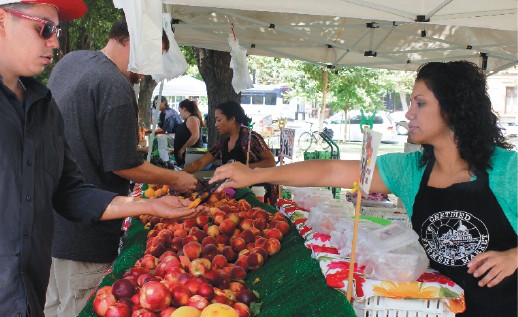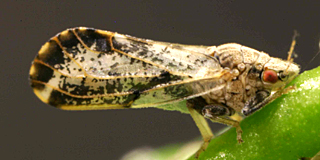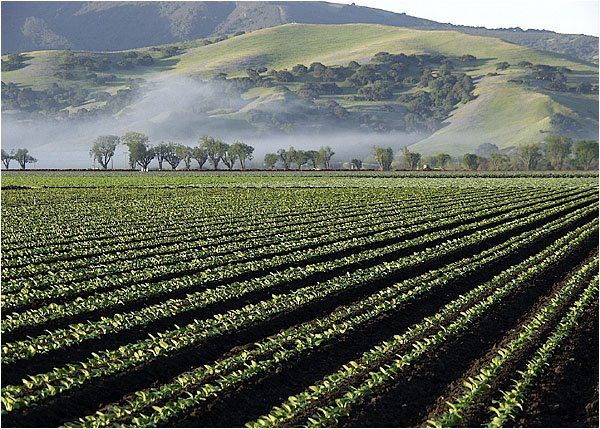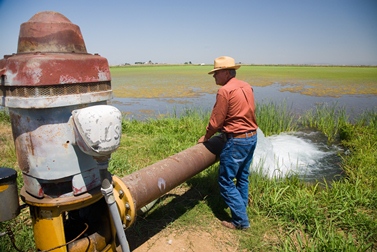Farmers Markets Try to Weather the Drought
Source: Ching Lee; Ag Alert
With summer harvest in full swing and farmers markets brimming with the usual variety of produce, the effects of the drought may not be immediately apparent to shoppers–but farmers who work those markets tell a different story.
Kern County farmer Greg Tesch, who works five farmers markets in his region and runs three of them, relies entirely on surface water to farm more than 70 different fruits, vegetables, herbs and cut flowers. Tesch said he’s not selling his usual array of products this year.
He said he couldn’t plant strawberries last fall because the canal that feeds his farm went dry in August. Half his cherry trees did not survive, so he had fewer cherries to sell. And because he did not have water deliveries until mid-March, he was unable to plant certain crops on time, missing an important early-season niche.
“We’re typically able to sell things that are slightly out of season,” he said. “The water wasn’t available, so we had to plant when a lot of other people planted, and so there is less demand for our product at farmers markets, as well as wholesale.”
He said the late start also forced him to lower his prices because he now faces “a glut of produce all at one time” and “competing against stores in the wrong time of year.”
Looking ahead, Tesch said he plans to scale back his vegetable production and plant more deep-rooted crops, most likely cherries on drought-tolerant rootstocks. He said he wants to grow crops that mature in the spring, which he acknowledged will affect his farmers-market business.
Some farmers who have better access to water were not necessarily spared from impacts of the drought. In San Diego County, Eli Hofshi, who uses mainly municipal water for irrigation, said he has stopped watering his winter vegetables and will not harvest them because his water bills have become unaffordable.
He said while certain crops such as tomatoes, squash and trees can handle some water stress, vegetables such as cauliflower, broccoli and Brussels sprouts become too bitter if not irrigated. In hindsight, he said he should not have planted the winter vegetables.
“We just didn’t realize it was going to be this costly,” he said. “We planted them last fall and they’ve just now started to produce. So it was a bad mistake. It’s been a double loss by putting the water in, doing the labor.”
With the loss of product, Hofshi said he’s had to buy from other farmers to fill in at his farm stand, but he’s not able to do that at the farmers market, where he’s taking a loss, despite raising prices.
“People are definitely balking at the prices right now,” he said. “They don’t like to pay (more). But we absolutely had to do it, with the cost of water and not to mention we’ve had a minimum-wage increase.”
Fresno County blueberry farmer Kim Sorensen, whose season ended earlier this month, said she also had to raise prices this year—by about 8 percent—to cover some of her higher production costs from having to pump water during the winter. While her customers noticed the price increase, she said most of them understood.
“We lost a little business I think, but not a tremendous amount just because most of what we do is in more affluent areas,” she said.
Farms in other parts of the state where there’s more water also reported increased production costs, with some having to reduce their production or not grow more thirsty crops in order to save water.
San Joaquin County farmer Beatriz Jimenez said she didn’t grow as much okra, eggplant and peppers. Cesar Cuebas, who works for Perry’s Garden Highway Gardens in Sacramento County, said the farm cut at least 30 percent of its production of crops such as sweet corn, tomatoes, peppers and watermelon. And El Dorado County farmer Patrick Hoover said he restricted water on some of his crops, such as apples, and may have smaller fruit this year.
“The drought is not just about water,” said Dan Best, general counsel of the California Federation of Certified Farmers Markets, noting that the warm winter did not give trees such as cherries enough chill hours to set fruit, leaving many growers with a very small crop or nothing to sell.
But for the most part, farmers-market managers reported little change in the amount and variety of products selling at their markets, and said any price increases have been minimal.
Joe Schirmer, who grows a variety of vegetables in Santa Cruz County, said warm, sunny winter weather increased patron attendance at farmers markets, which was good for business. With access to adequate groundwater supplies, he said he was able to extend his growing season during the winter.
“Things really were productive in the wintertime, so we actually did pretty well because of the drought,” he said.
And while having to irrigate through the winter definitely increased his costs, he said the extra production and sales probably resulted in a net gain for his farm.













